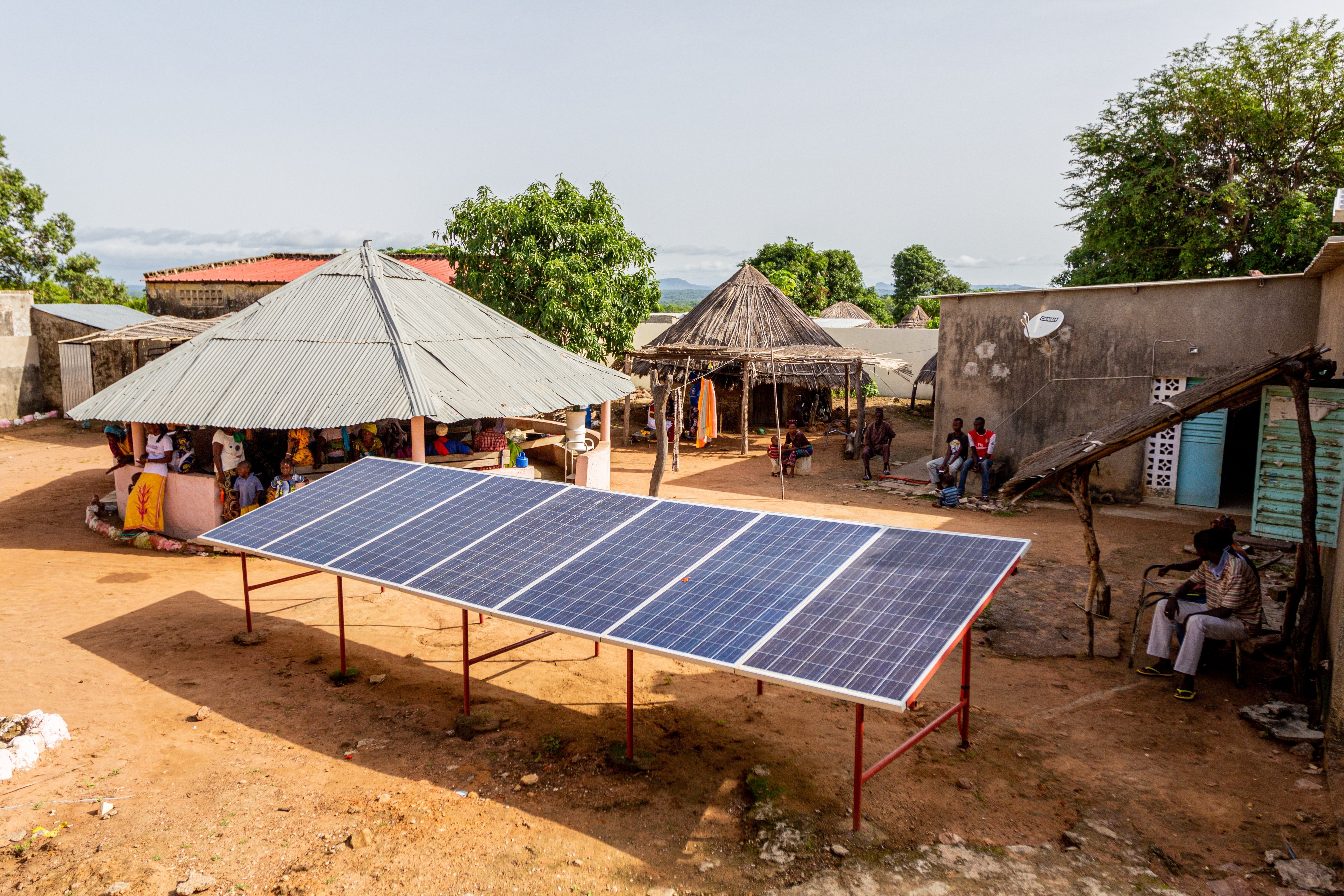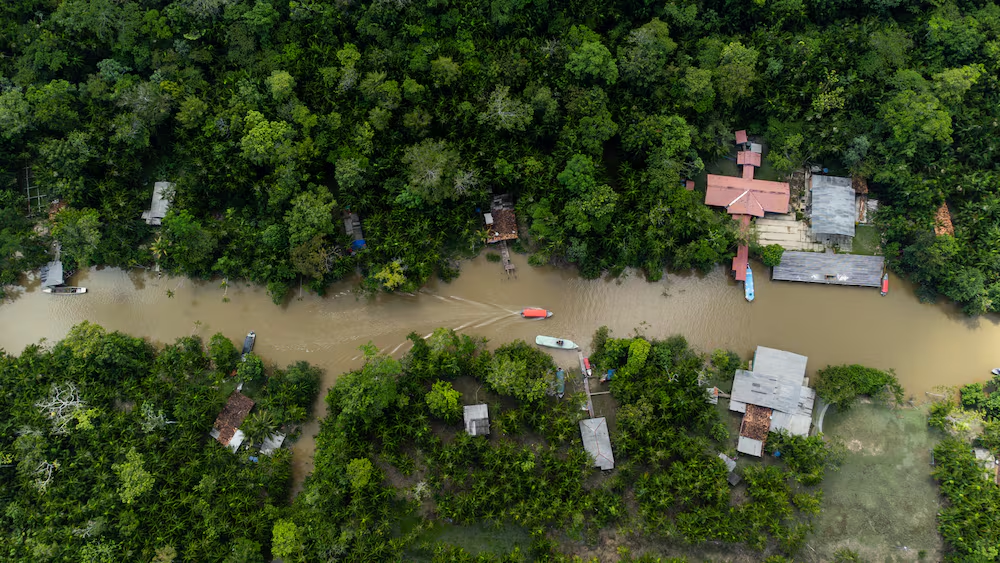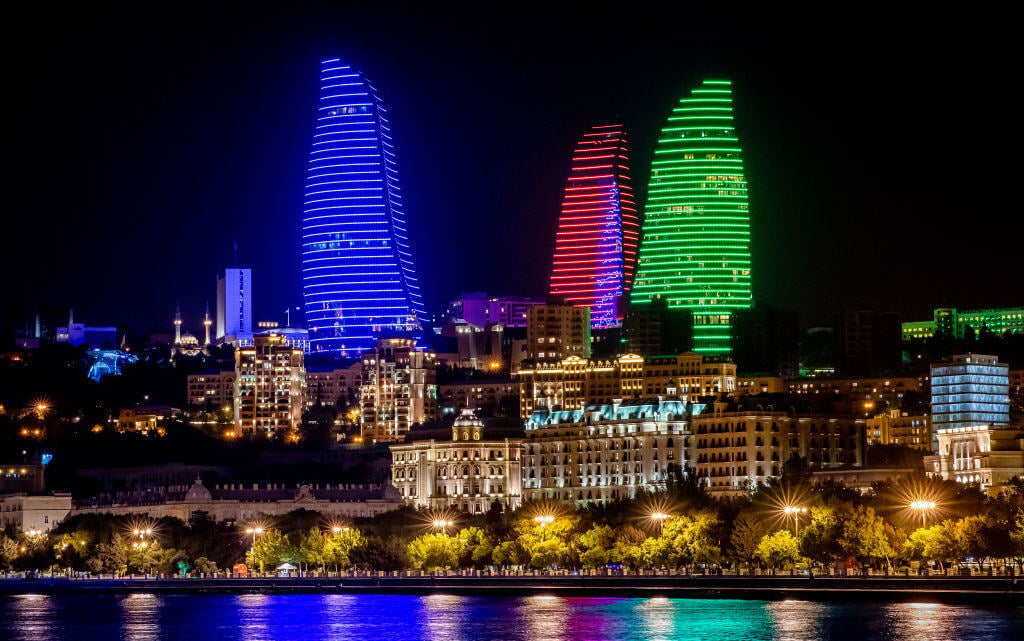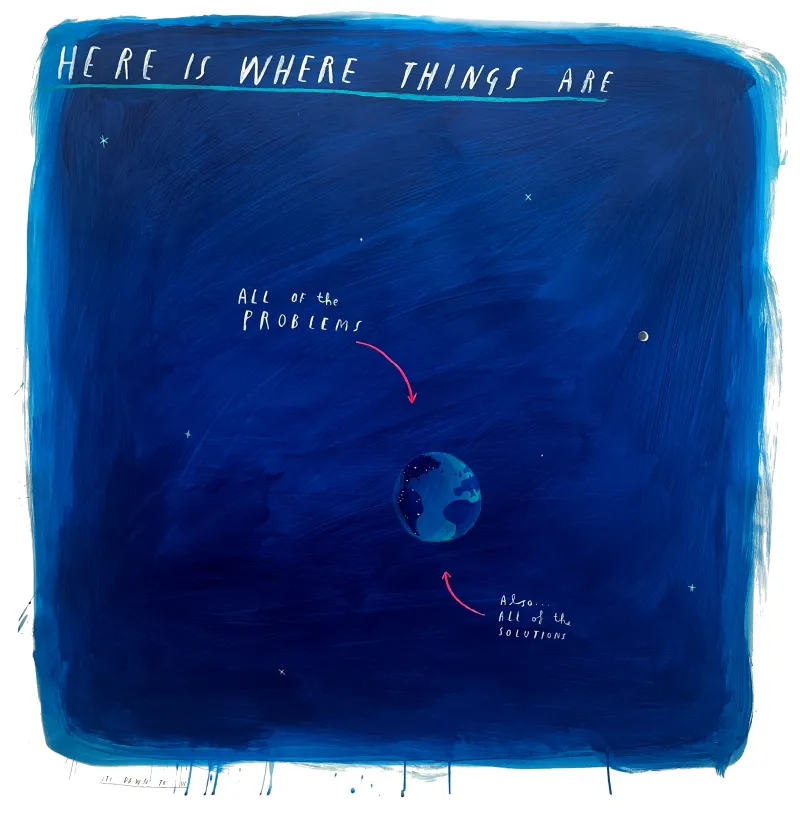Bonus: What The Hale Does This Mean? with Thomas Hale: Net Zero Goals
With science demanding that in order to stay below 1.5C we must reach “net zero” greenhouse gas emissions by 2050 at the absolute latest, how do we get there?
About this episode
A bonus episode for you this week!
With science demanding that in order to stay below 1.5C we must reach “net zero” greenhouse gas emissions by 2050 at the absolute latest, how do we get there?
We know we can’t keep emitting as we currently are and just offset to balance it out. We need radical cuts and that means a complete reshaping of the global economy and most business models. Arguably, anyone could shape their net zero goals differently, unless we can compare these (literally) hundreds of commitments that have been made – and hundreds, even thousands more that will continue to come.
So here’s a question – what does “net zero” actually mean? Is it the same as carbon neutrality, or any of the other terms we hear and read about?
This week, Tom Rivett-Carnac dials up for a quick chat with Dr. Thomas Hale, Associate Professor in Global Public Policy at Oxford University. He’s part of a team that has just released a report – Taking Stock: A global assessment of net zero targets. The report is the first quantitative analysis of the robustness of the different types of net zero targets and provides a baseline against which we can compare country, city, or company level net zero commitments.
__
Have a climate change term you don’t understand and want to ask Thomas Hale? Message or mention us with #WhatTheHale and we’ll ask!
Full Transcript
Transcript generated by AI. While we aim for accuracy, errors may still occur. Please refer to the episode’s audio for the definitive version
Tom Rivett-Carnac: [00:00:13] Hello, I'm Tom Rivett-Carnac, and today we've got a special bonus episode of Outrage + Optimism for you. Now, as part of our Race to Zero series, we'll be talking to leading figures in diplomacy, politics, business, finance, activism, entrepreneurship to understand exactly how we can move the global economy to mobilize faster in pursuit of a net zero future. The Paris Agreement has, of course, been adopted by more than 190 countries and is the North Star also for many cities, regions, companies and financial institutions. At the heart of it is the goal for net zero global greenhouse gas emissions and a deadline that guides how deeply we need to cut those emissions to avoid the worst impacts of climate change. Science demands that to stay to 1.5 degrees, we have to reach net zero greenhouse gas emissions as quickly as possible and certainly before 2050. But how do we get there? We can't just keep emitting all the way to those dates and then drop off precipitously. We need to have a smooth descent, reducing at least by 50 percent by 2030. What role do nature based solutions play? We absolutely need to restore nature, restore the biosphere. But how do we integrate that with our net zero climate goals? Is it OK to offset a proportion? If so, what proportion and at what time? At the moment we're in a situation where there isn't that much standardization around what a net zero goal is, and that can be good in some ways because it provides innovation and momentum and interest.
Tom Rivett-Carnac: [00:01:59] But it can be bad because how do we know that everybody is measuring them in the same way in a manner that is comparable? What does net zero even mean? Is it the same as carbon neutrality? What do any of these other terms that we talk about mean and how do they relate to each other? Now, recently I had a fascinating chat with Dr. Thomas Hale, Associate Professor of Global Public Policy at Oxford University. He's part of a team that just released a report taking stock, a global assessment of net zero targets. The report is the first quantitative analysis of the robustness of the different types of net zero targets and provides a baseline against which we can compare all of the different targets. I've known Tom for a long time. We worked together in the years before the Paris commitment. He is a brilliant academic and he's more than that. He's practical, he's solutions focused. He's really the man to guide us through. So here we go with Tom Hale in a new section that we're probably going to be bringing back and which we are, of course, calling 'What the Hale Does This Mean?'
Tom Rivett-Carnac: [00:03:17] Tom Hale, what a pleasure to have you on Outrage + Optimism. Thank you so much for joining us. We're honored to be talking to you. We've known each other for a long time and always had the greatest admiration for your work and the role that you've played in the global system. So great to have you here.
Tom Hale: [00:03:29] Thanks for having me.
Tom Rivett-Carnac: [00:03:30] Of course. So I wonder if we could kick off this. No one better position than you to help us understand this slightly squishy, or maybe not, concept of net zero and how it changes the world. Why don't we just start there? Can you just talk us through what is net zero? What does it mean? Where does it come from?
Tom Hale: [00:03:47] So net zero comes from our understanding of the carbon cycle, this process of planetary system to which carbon comes out of things like us and our breath and goes into things like trees when they create photosynthesis and is how the world's atmosphere is regulated. And that involves two really important ideas, sources and sinks, which Tom you'll, of course, remember from Article Two of the Paris Agreement, which says to create a balance between sources and sinks in the second half of the century. And that means net zero. Sources and sinks are equal, that means we're in a state of balance, which is where we need to get to to halt climate change, halt global warming.
Tom Rivett-Carnac: [00:04:28] Fantastic. And what does that mean? So I understand what that means at a meta level. And can you now dial it down? What does it mean? Because it's also applied not only globally in the context of the Paris Agreement, but also with all sorts of myriad of other entities, be it a national government, better city, better a business. What does it mean for those types of entities?
Load MoreTom Hale: [00:04:48] I think that's one of the most exciting things I've seen happen since Paris, is how every different kind of actor in the world, cities, businesses, even individuals have said, OK, the world has set this goal to have a balance between sources and sinks, net zero. What does that mean for me and for us and for our organization or our actor category? And we've seen all these different actors begin to adopt net zero targets, which in the global sense means a balance between sources and sinks. And for these actors means for them making sure that their own contributions to climate change are being brought to zero and should anything be left over, is being neutralized in a permanent and Paris compatible way. So getting to sources and sinks balanced globally means each and every one of us has to get there as well.
Tom Rivett-Carnac: [00:05:37] So let's get into that, because there's all sorts of fun stuff we can unpack in that. So, neutralize our emissions, for example, we can probably know two things in that. One is the neutralisation can't be 100 percent. You kind of keep doing whatever you're doing and you just neutralize everything. And it's also impractical for the neutralisation to be zero. So somewhere between 100 and zero is the sweet spot. And is that for everybody? Is it the same for everybody? How do you judge what that means, that neutralisation?
Tom Hale: [00:06:08] That's a really important question, which is different for different sectors, different for different entities. But the most important thing that's true for everyone is that the reduction has to come first. We are in a real race against climate change and there is no way we can avoid immediate, strong, strong reductions in our emissions. That has to be the first and most urgent priority. And if we're especially looking for action, what we can do this year, the next five years, next 10 years is really going to be on that let's bring emissions down side. Eventually, when an actor is close to getting toward zero, there will be pieces, these residual emissions, will need to be dealt with, and that will require a lot of work through building up natural sinks and possibly even new kinds of technologies we don't even know about yet. But we really need to prioritize the reduction part first and foremost. The question of how much residual emissions makes sense is sort of different for different actors. But the basic answer is it has to be a tiny amount. Some of the leading networks and initiatives that try to define this question, for example, a science based targets initiative says it should be around 10 percent or less. So that's giving you the ballpark of where big companies are aiming for. So basically, the net part is an important part of the discussion. If we look away from that, we're forgetting about this balance question cycle, the carbon cycle, this is all based on but reductions are the overwhelming priority.
Tom Rivett-Carnac: [00:07:35] And help me understand, we know globally net zero before 2050 to give us a shot at 1.5 degrees. And of course, that's not 100 percent shot. But that's kind of shorthand for the sort of rough global ambition to keep us in the game. And, of course, within that, different sectors face different challenges. So how close are we as a community that's concerned about this issue to having a rough sense of a practical and realistic but ambitious pace of decarbonisation for each sector?
Tom Hale: [00:08:08] I think we're beginning now to really wrap our heads around what that means. So we've seen a huge amount of uptake of net zero commitments, broadly defined to from all different kinds of actors, even some ones you might find surprising, like oil companies say, or steel companies, things that are really going to be difficult to decarbonise. And that's why I think we need a lot more precision on what we mean by net zero and standards and transparency around this concept. But the pathways are really given by climate scenarios, and we know that on average, we need to bring our carbon emissions to about half of what they are in this decade. Some sectors will be having to go faster than that because they're on the easier side. Electricity, for example. Some sectors will be a little bit slower than that because they are more difficult, say steel or petrochemicals, which are also growing. So it varies by sector. But we all know that this net zero imperative is not some distant 2050 thing that you ignore for forty nine years and then jump on in the last year. It's a pathway. And if we're not beginning to walk that walk today, we're not going to be able to claim the net zero outcome that we need to get to by the middle of this century.
Tom Hale: [00:09:20] So the really exciting thing about net zero is how it spread so widely since it was put into international law in 2015 by the Paris Afgreement. But because of that success, we now have a very wide range of different kinds of targets that are saying they're net zero targets. So we need to go a bit deeper to dig into what's actually happening, what these targets look like in practice, to know which ones are more robust, which ones are less robust, and how we can tell the difference. And that's what this report is really trying to do. So we looked at every country in the world. We looked at all of the big states and regions in the twenty five largest emitters. That's about 800 actors. We looked at all of the cities in the world with a population of more than 500000 people. That's about a thousand cities. And we looked at the 2000 largest publicly traded companies in the world. That's the vast majority of the global economy. And if you look across all those different actor groups, you'll see that huge portions of them are covered by global net zero targets, something like 70 percent of the world economy, if you add all that up, is covered by something that looks like a net zero target. But if you look at which of those net zero targets are actually the most robust, that have strong time-frame, strong governance, are looking at offsetting in a rigorous, scientifically based way, you actually find a lot fewer of them that are meeting that higher level of ambition, something more like five percent of the world economy. So we have a lot of success with net zero. It's really become an organizing principle in an exciting way that reflects the power, I think, of the Paris Agreement, the sort of 'Paris Effect' that is often talked about here on this podcast, but also shows how much more work we need to do to realize that vision and bring that ambition in line with the pathway towards success.
Tom Rivett-Carnac: [00:11:01] So that's really helpful. And what a fascinating place to focus. What do you think needs to happen next as a result of this? Because I guess there's a benefit to standardization and potentially there's a risk too of doing that too early, then you've got to kill some of the bubbling innovation. So where do you think we are in that arc and how would you like to see this implemented?
Tom Hale: [00:11:22] So we look at five different areas that net zero targets should meet to be credible. They should have a good timing, make sure they're before the 2050 mark, they should cover all emissions. They should be well governed with reporting and clarity on plans, etc.. But one of the most important ones is how they use offsetting. This is a really important one to get right, because there's a lot of misinformation around offsetting, people thinking they can become 'net zero' by tomorrow planting a ton of trees and keep doing what they're doing. And that's not right. We know that to balance sources and sinks, we need to think about the time scale that things will exist in the atmosphere. And we know that carbon you put up today is going to be there for decades, centuries, even up to millennia, hanging out there. And so any kind of sink, you're restoring a natural sink or even a technological one you might be developing. It's going to need to be commensurate to that massive time frame, which is why it's so important to reduce emissions now, because we don't have enough trees in the world to compensate for all of these emissions we're putting up into the air.
Tom Hale: [00:12:27] So that's one where I think we need to really see a transition from where we are now in the offsetting debate, which is pretty Wild West landscape, there are some good ones or some good ones. A lot of misinformation about which are which, to some really rigorous net zero aligned compensation measures, which would be one part of the solution. I emphasize again, not the main part of the solution, not anyway an excuse for avoiding immediate reductions, but a really important transition that we need to see in that piece of the climate ecosystem. Just add one point on that, the main finding from a report on the offsetting question, though, is not just that people aren't aligning their offsetting practices toward net zero, that many companies in many cities, even some countries, are not really saying much about how they might use offsetting to achieve net zero. This is kind of a basic requirement on having some clarity of thought and making that clear to the public, to citizens, to voters, to consumers, to investors who might be interested to know how you're going to use offsetting so that more information needs to be put out about this topic.
Tom Hale: [00:13:26] I think the key thing we need to do with net zero, in my view is to celebrate, but also to scrutinize. It's not enough to say I want to be Pars aligned and therefore I'm going to call whatever I'm doing net zero because that's my aspiration. That's a great starting point. But we need to now move to the phase of implementation. That means that all of our pledges need to be super clear. They need to be clear in their time scales, what the plan is, what the immediate actions are, what, if any, use offsetting might be used. All of those things need to be made available to the public to be able to have credible climate action. It's wonderful to see all the pressure and all the attention, all the momentum in this space. But there's also a big risk, because I think if net zero comes to mean something quite vague, something quite green-washy in the eyes of many scientists and civil society groups, that it's actually going to do huge damage was achieved in Paris, which was to actually, for the first time, recognise in international law that we need a balance of sources and sinks. And if the failure to implement net zero well means that loses credibility, that's going to be actually a step back for that big breakthrough I think.
Tom Rivett-Carnac: [00:14:35] It's interesting because that's a balance. That's a political balance, not a technical one, because if you squeeze it too quickly, then actually you squeeze out, as you said, 70 percent to five percent. I'd rather have 70 percent feeling optimistic and engaged and excited and moving forward than five percent doing it perfectly and everyone else giving up. So that's the balance of timing around when you do that, which is a tricky balance. Tom, you've been very clear about net zero being a balance of sources and sinks. And I just like to read you some other terms and invite you to tell me if they mean the same thing. Climate neutral?
Tom Hale: [00:15:10] Climate neutral to me means that you're currently not emitting more than you're putting away, but they are not necessarily achieving permanent long term balance between sources and sinks, which is how I think about net zero.
Tom Rivett-Carnac: [00:15:22] Lots of offsets then?
Tom Hale: [00:15:23] Yeah, it could be a lot of offsets with a lot of emissions.
Tom Rivett-Carnac: [00:15:26] Carbon neutral?
Tom Hale: [00:15:28] So net zero is primarily a carbon focused term. But we also know we need to get to net zero by the middle of the century. Other gases are a little bit more tricky because they exist in shorter time frames and they're probably on a trajectory a little bit after the middle of the century. So carbon zero is a great first goal, but it ultimately will need to be total greenhouse gas net zero to achieve what we need to achieve.
Tom Rivett-Carnac: [00:15:55] Okay, so small distinction there. Climate neutral, carbon neutral. Paris aligned?
Tom Hale: [00:16:01] Paris aligned, I think is actually the most vague, but potentially the most exciting. Because the Paris agreement has multiple goals. One goal is getting a balance between sources and sinks, but other goals are, for example, looking at adaptation, looking at some of the justice issues raised in the preamble, looking at finance and aligning that. So I think I would interpret Paris aligned as a poorly defined term now, but potentially the most exciting of all.
Tom Rivett-Carnac: [00:16:25] Paris compliant?
Tom Hale: [00:16:27] I think this is a tricky one because Paris has a very precise meaning of compliance which applies to parties or state members of the agreement. And it's about whether they've done their procedural steps. So I think that one's probably best reserved for the legal processes.
Tom Rivett-Carnac: [00:16:42] Thank God for Tom Hale. Seriously, I've struggled to pull these apart myself, and I was involved in the process that created them. I'd like to propose a new Outrage + Optimism segment. Could be once a month. Anyone who is confused about a term, chuck it in and we'll throw them at Tom and we'll see what he's got to say about it. Thank you, Tom.
Tom Hale: [00:16:58] Thank you, Tom.
Tom Rivett-Carnac: [00:17:12] So there you go. If there's any terminology or concept that you're hearing and don't understand, chances are that thousands of us don't either. So tweet us @GlobalOptimism with the hashtag, #WhatTheHale if you have a question and we'll put it to Tom. And stay tuned for more episodes in Outrage + Optimism's Race to Zero series. The first two episodes are already out: The Road to COP26 with Alok Sharma and Patricia Espinosa; and Extremely Electrifying on the Exciting Transport Transition with motor racing heroes Nico Rosberg and Sara Price are also available now. Thanks for joining us for this bonus episode. Please do stay in touch and we'll see you as usual next week. Bye.
Your hosts

Christiana Figueres
 Follow Christiana Figueres on Instagram
Follow Christiana Figueres on Instagram

Tom Rivett-Carnac
 Follow Tom Rivett-Carnac on Instagram
Follow Tom Rivett-Carnac on Instagram

Paul Dickinson
Guests








